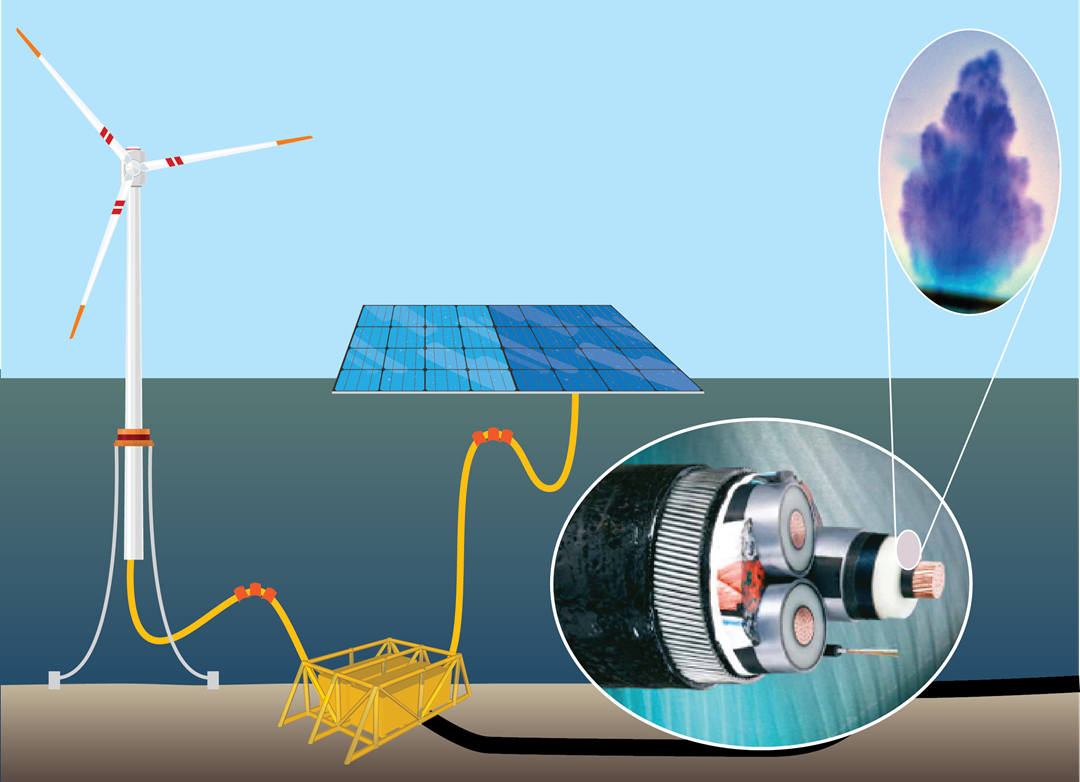Traditionally, subsea XLPE cables rated at or above 52 kV are equipped with a metallic water barrier (extruded lead sheath) to prevent ingress of seawater to the cable core (dry design). Cables rated below 52 kV do not need a metallic barrier (wet design). The technical need for a water barrier is driven by the ageing properties of the insulation system, which are negatively affected by the presence of water.
The potential EU ban on the use of lead by 2025 provides a critical driving force for the research, development, and demonstration of high voltage subsea cable designs without lead sheaths. However, there are other good reasons to use a lead free “wet design” where possible. These include environmental and health concerns caused by lead on people and environment, technical benefits such as weight and dynamic performance, and cost savings.
The next generation subsea cables facilitate new cost-reducing concepts for transportation of energy produced by offshore renewables such as floating wind- and solar farms in the future. As demands for renewable energy increases, reliable high voltage subsea cable designs will be of crucial importance for meeting the ambitious demands and requirements to reduce the European carbon footprint.

